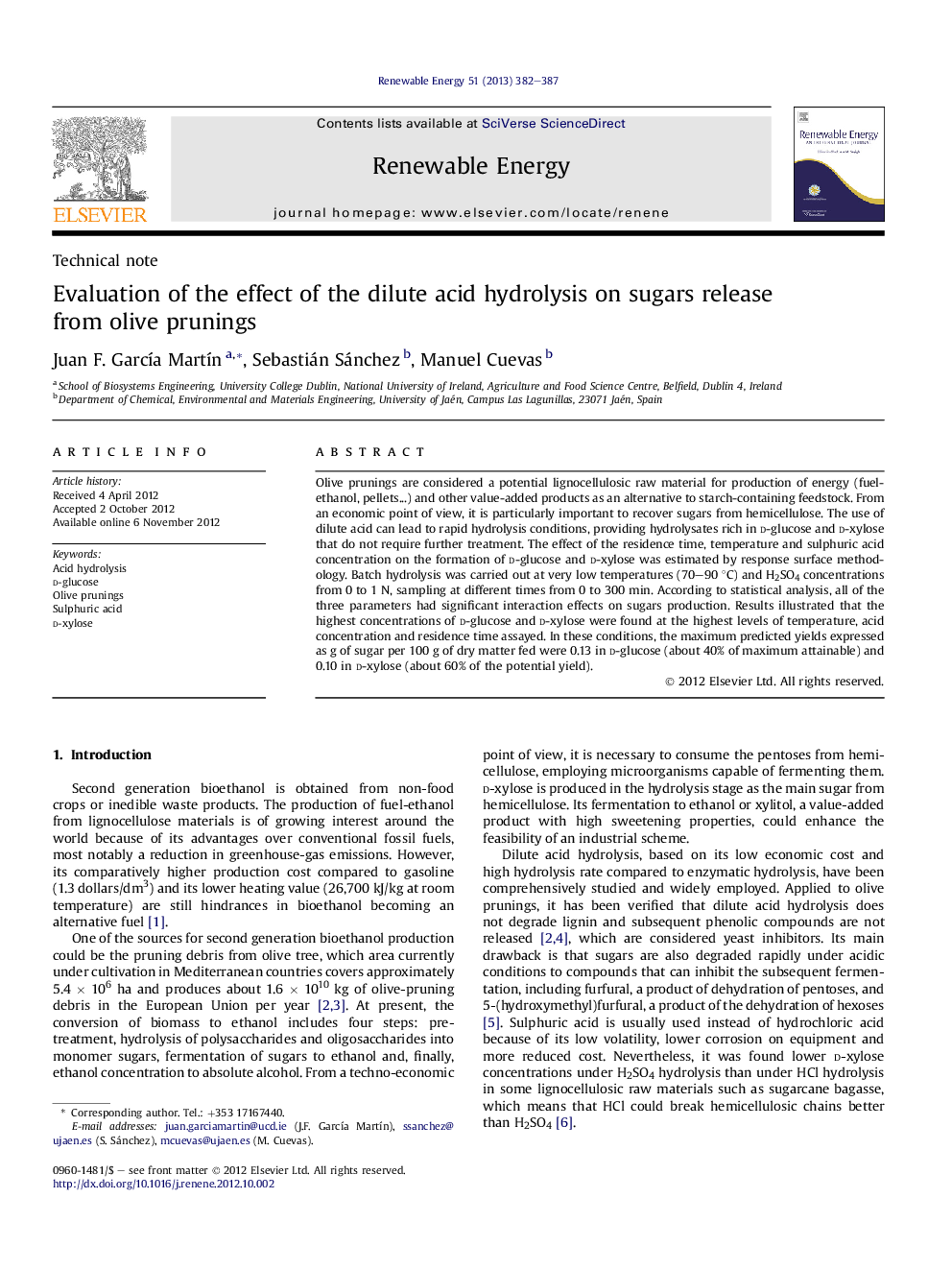| کد مقاله | کد نشریه | سال انتشار | مقاله انگلیسی | نسخه تمام متن |
|---|---|---|---|---|
| 300639 | 512486 | 2013 | 6 صفحه PDF | دانلود رایگان |

Olive prunings are considered a potential lignocellulosic raw material for production of energy (fuel-ethanol, pellets...) and other value-added products as an alternative to starch-containing feedstock. From an economic point of view, it is particularly important to recover sugars from hemicellulose. The use of dilute acid can lead to rapid hydrolysis conditions, providing hydrolysates rich in d-glucose and d-xylose that do not require further treatment. The effect of the residence time, temperature and sulphuric acid concentration on the formation of d-glucose and d-xylose was estimated by response surface methodology. Batch hydrolysis was carried out at very low temperatures (70–90 °C) and H2SO4 concentrations from 0 to 1 N, sampling at different times from 0 to 300 min. According to statistical analysis, all of the three parameters had significant interaction effects on sugars production. Results illustrated that the highest concentrations of d-glucose and d-xylose were found at the highest levels of temperature, acid concentration and residence time assayed. In these conditions, the maximum predicted yields expressed as g of sugar per 100 g of dry matter fed were 0.13 in d-glucose (about 40% of maximum attainable) and 0.10 in d-xylose (about 60% of the potential yield).
► RSM is used for sugar extraction from olive prunings by dilute acid hydrolysis.
► 37.6 g sugars per 100 g pruning are predicted to be recovered at low temperatures.
► Hydrolysates are rich not only in d-glucose but also in d-xylose.
Journal: Renewable Energy - Volume 51, March 2013, Pages 382–387